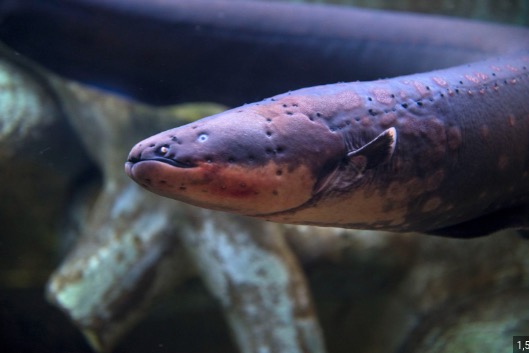By Sophia Byl
With the rise of modern technology comes the rise of electricity, and thousands of different ways in which it can be used to benefit humanity. Electricity is quite the common commodity today, but its brilliance was rarely taken advantage of just a couple of centuries ago… by humans, that is. Turns out, nature has once again beaten us to harness the power of some mysterious, omnipresent resource in unthinkable ways.
Electricity is, plainly stated, essential for life. And not in the way of needing your cell phone to function. In order to use your phone in the first place, or do basically anything else, your nervous system needs to send electrical messages to different parts of your body, so that you can respond to whatever stimulus piqued your interest. Besides our brain and nervous system signalling other organs, however, humans don’t use electricity for external purposes. It would be fantastic to be able to bend something like static electricity to your will, redirecting a shock from your light switch over to your annoying sibling. But alas, we humans have no such freedom.
Meanwhile, multiple subjects of the animal kingdom, mostly aquatic ones, tease our electricity inability. Most commonly seen is underwater electrolocation by predatory fish, used to sense the weak bioelectric fields given off by smaller prey fish (humans also have a bioelectric field, since it is generated by those normal metabolic activities that require electricity). Using their spectacularly named ampullae of Lorenzini organs, fish such as sharks and rays can gain an edge over other predators without electroreceptive capabilities.
Perhaps most famous for its bioelectric antics is the electric eel, due to the fact that its primary weapon against its prey is the same thing it uses to locate them in the first place. Being able to emit a pulse of up to 600 volts is no small feat, and the electric eel is able to apply that adaptation in many different ways. The electric pulse is generated similar to how an action potential is generated in our brains; the difference in the eel’s case is that the potential is generated in their specialized electric organ. The sudden difference in electric potential creates an electric current that the eel can use to incapacitate its prey.
How exactly does this incapacitation occur? Well, once again, electricity is present in all organisms’ bodies to power their muscles – it’s used when motor neurons send signals to muscle cells to make them contract and move. But what happens when the signals are disrupted? Researchers from Vanderbilt University conducted a study between electric eels and their prey, and found that the eels were able to “remotely control prey by transcutaneously activating motor neurons”. Effectively, the surges of voltage generated by the eels hijacked those muscle-controlling neurons in the prey fish, paralyzing them and allowing the eel an easy meal.
The Vanderbilt researchers brought up a variety of follow up questions along with their study, many of them relating to how the electric eel does not shock its own muscles or nervous system while subduing its prey. The answer to that is still in the works, but another question is raised with the idea of the nervous system abduction: could the electric eel be able to control an aspect of other fish’s nervous systems other than motor neurons? Perhaps targeting sensory neurons, to stop messages warning the prey about something it sees or hears from reaching the brain and being processed.
A path this question has been led down, though controversially, is if electric eels have the ability to interfere with signals in the brain or spinal cord. Access to its prey’s central nervous system would give the eel the potential to do some incredible yet devastating things. It’s a convergence of animal behavior and neurobiology, and the answer remains to be seen, perhaps due to technological limits or moral questionability.
One thing remains certain, though: the electric eel’s capability to wield something as dangerously powerful as electricity to its advantage is something that our society could learn from. Alessandro Volta first took inspiration from the eel to invent the first electric battery, and since then, electricity has brought power to our streets and households. Many technological and medical fields could be improved, and new inventions created, from the model of this shocking little guy (this article wasn’t going to be over without that pun being made).

